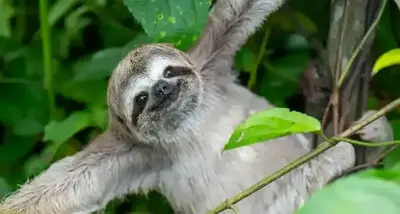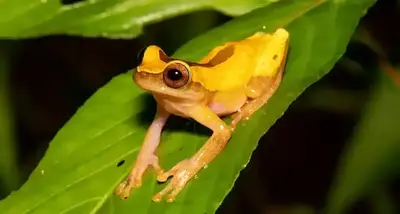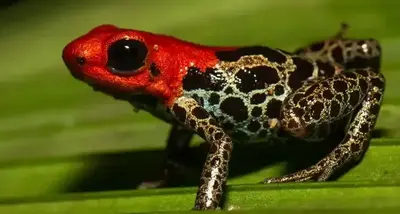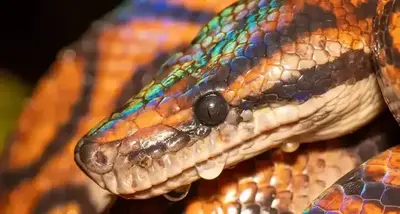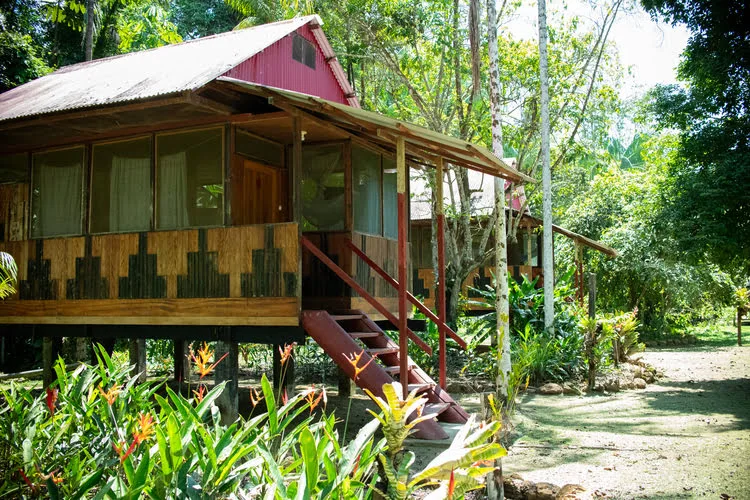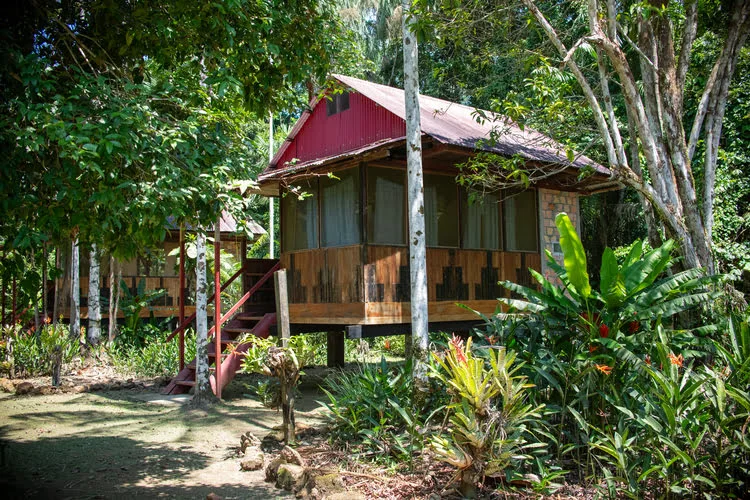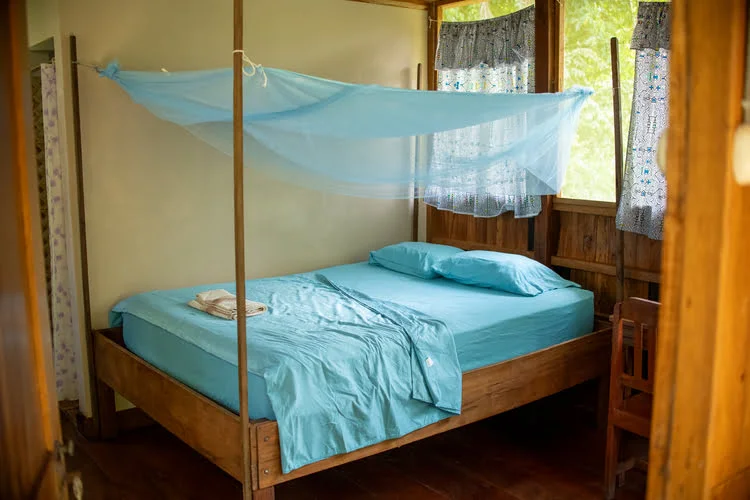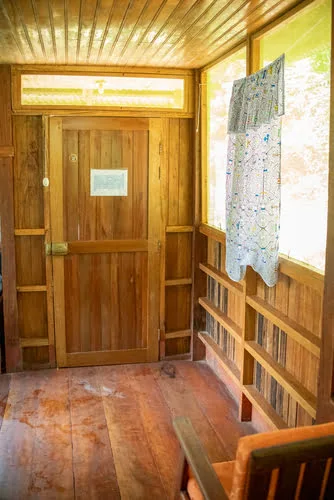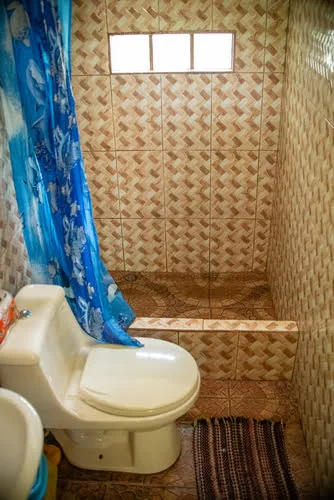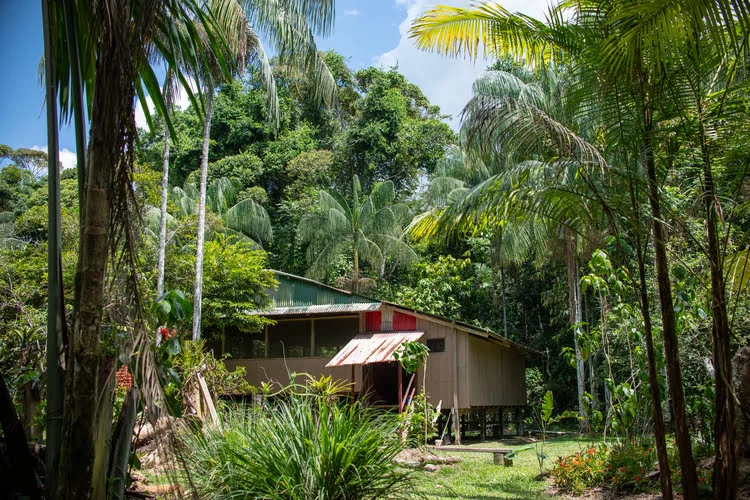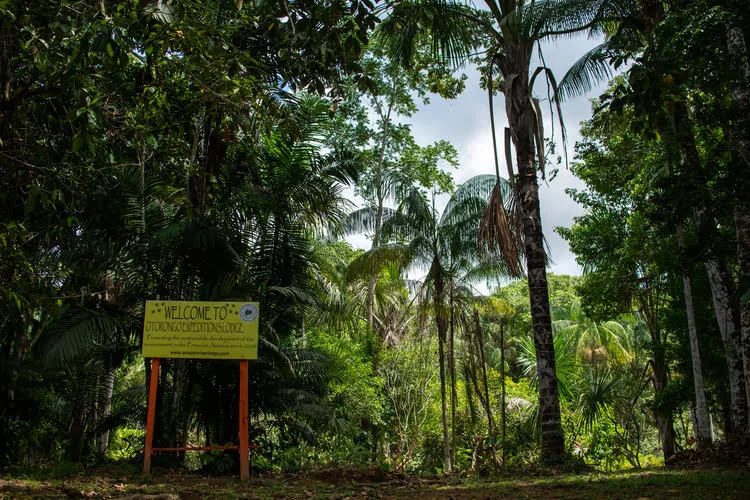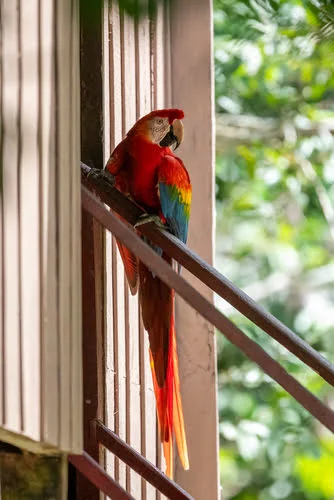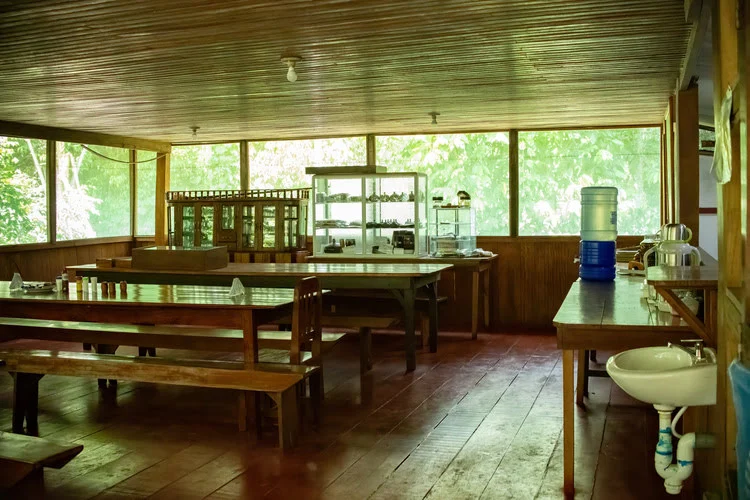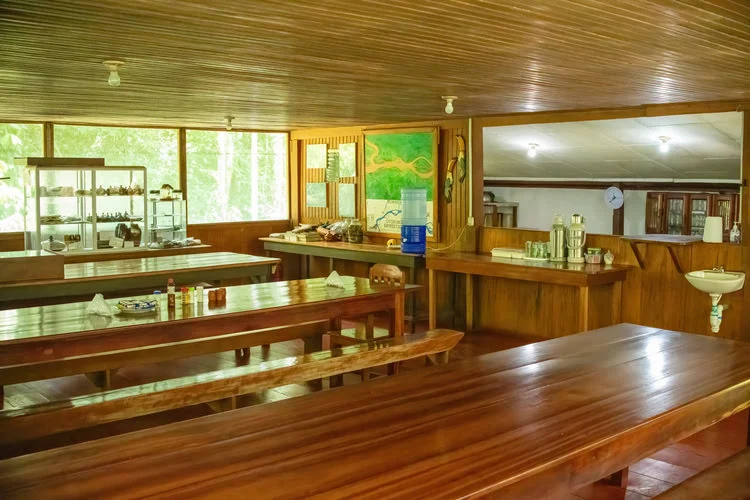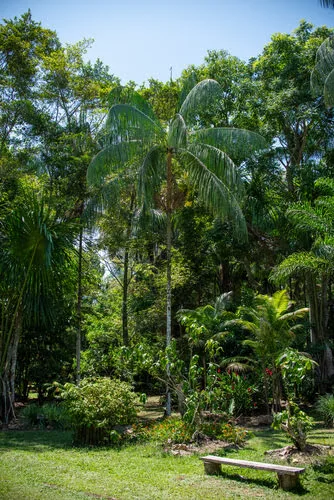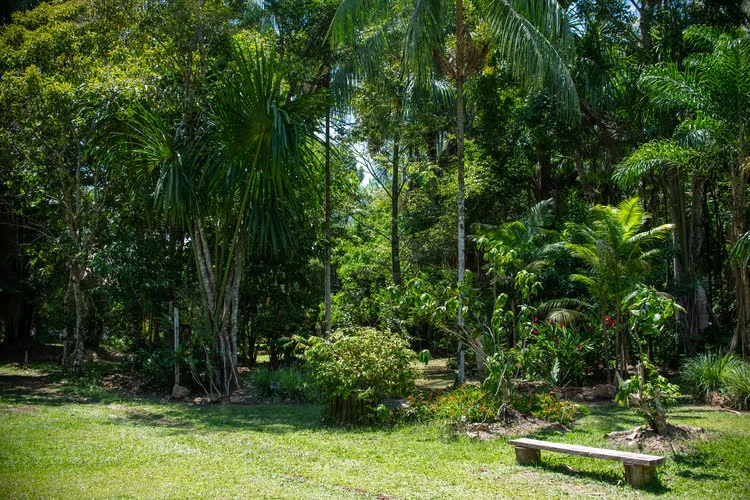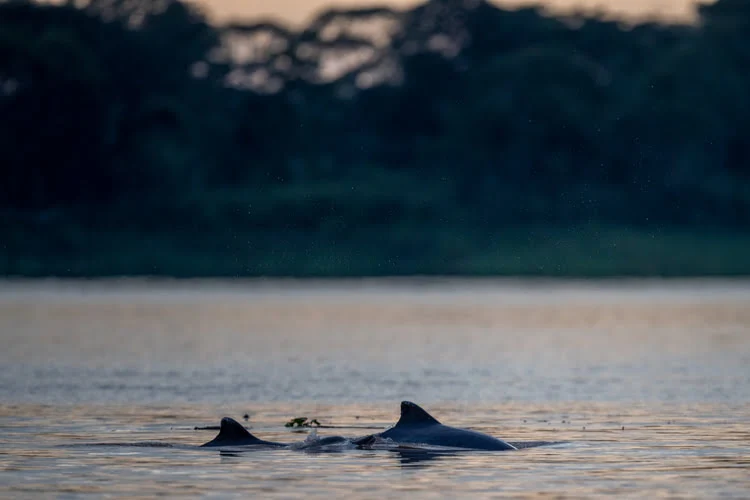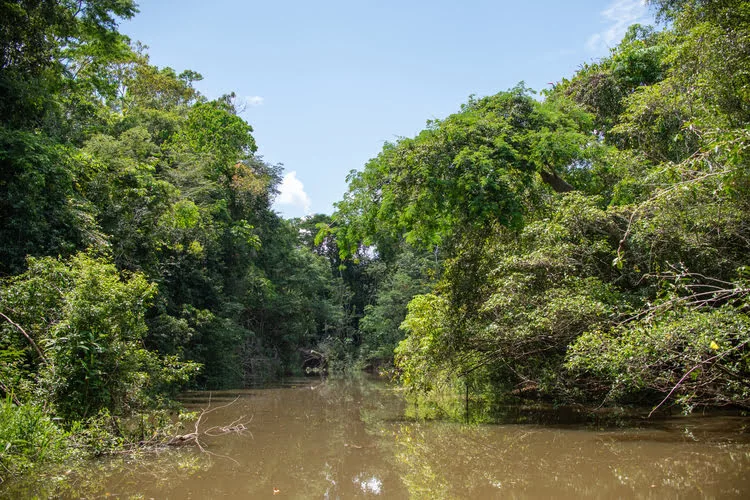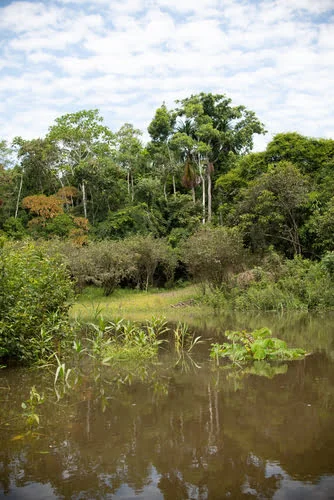Otorongo
Ecolodge & Amazon River Wildlife Tours
- 6 hectares protected secondary rainforest
- Guided tours day and night included in stay (self-guided, solo exploration is not allowed)
- Incredible biodiversity on the property and on river tours of the Amazon and its tributaries
Table of Contents
Otorongo Ecolodge
Otorongo Expeditions Amazon River Lodge offers a comprehensive ecotourism experience tailored to wildlife photographers and herpers eager to explore the unparalleled biodiversity of the Peruvian Amazon. Guests can expect expertly guided tours morning, afternoon, and night, with knowledgeable guides who excel at spotting elusive reptiles, amphibians, birds, and other wildlife, ensuring a maximized opportunity for sightings. While guests are welcome to wander the lodge’s gardens, access to the surrounding trails is limited to guided excursions, making Otorongo less suited for those who prioritize solo exploration. However, guided tours maximizes the numbers of wildlife encounters you'll have, as guides are experts at spotting animals, and know the best locations for your target species. For approximately $200 USD per day, visitors enjoy an all-inclusive package featuring comfortable lodging, three hearty meals daily, transportation to and from Iquitos, and immersive guided tours. The lodge protects approximately six hectares of secondary Amazon rainforest, fostering ecotourism as a sustainable income source for local communities, with many locals employed as guides, cooks, and maintenance staff, reinforcing Otorongo’s commitment to conservation and cultural preservation.
About Otorongo Amazon River Ecolodge
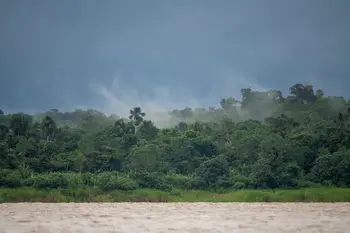
Otorongo Ecolodge is a remote ecotourism destination located on the Amazon River and adjacent to the Oran river tributary, approximately 52 miles downstream from Iquitos, Peru. Protecting about six hectares of mostly secondary Amazon rainforest and surrounded by millions of acres of pristine Amazon rainforest, the lodge serves as a gateway to one of the most biodiverse regions on Earth. Designed for wildlife photographers, herpers, and birders, Otorongo offers a unique combination of rustic, but comfortable accommodations, expertly guided tours, and sustainable tourism practices. Guests can immerse themselves in the natural splendor of the Amazon while enjoying service precisely tailored to their interests, goals, target species, and their individual abilities.
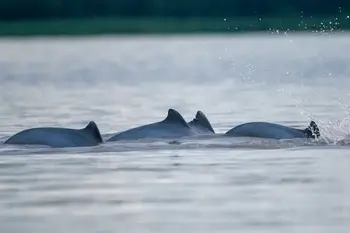
The lodge is accessible via speedboat, with transportation included in the all-inclusive daily rate of around $200 USD. This rate covers three large meals per day, lodging, guided tours, and transport to and from Iquitos. The lodge itself is designed to blend into its surroundings, constructed with sustainable materials and featuring accommodations that balance comfort with an authentic Amazonian experience. Guests can choose between private cabins with solar-powered 220v electricity and group cabins with 12v lighting and USB charging stations. Photographers will have no trouble keeping their camera bateries, flashlight bateries, and phones charged. Both cabin options provide flush toilets, showers (only cold water), and thoughtful finishes in the local Shipibo style, ensuring a comfortable stay, even in the hot and humid Amazon rainforest.
What sets Otorongo apart is its commitment to conservation and community. The lodge supports local employment by hiring guides, cooks, and maintenance staff from nearby communities, promoting ecotourism as a sustainable income source. Guided tours are a central part of the experience, as guests are not permitted to explore the lodge’s trail system independently. While this policy may not appeal to those who prefer solo exploration, it enhances the quality of wildlife encounters by leveraging the expertise of local guides. These guides are skilled at spotting and identifying species, from camouflaged reptiles and amphibians to elusive birds and mammals, ensuring that guests make the most of their time in the rainforest. Whether you are targeting sloths, monkeys, river dolphins, giant river otters, macaws, hoatzins, parrots, bushmasters, fer-de-lance, poison frogs, or any other species, the expert guides will know the absolute best places to look for them, and have super human abilities in spotting well camoflauged and hidden animals. The guides will uncover far more animal sightings than a visitor could on his or her own.
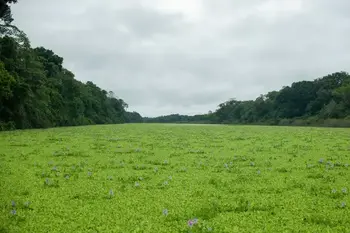
Otorongo’s biodiversity is a significant draw for visitors. The surrounding rainforest is home to an astonishing variety of species, including reptiles such as rainbow boas, anacondas, and bushmasters, as well as seven species of poison dart frogs, one of which was discovered by the lodge’s founder, Anthony Giardenelli. Birdwatchers will be thrilled by the presence of over 413 bird species in the area, including rarities like the spotted antpitta and wire-tailed manakin. Mammal enthusiasts can observe eight species of primates, gray and pink river dolphins, three and two toed sloths, and more, with boat excursions offering access to habitats impossible to reach on foot.
The lodge’s location at the confluence of varzea (flooded) and terra firme (non-flooded) forests provides unique opportunities to explore diverse ecosystems. Activities are designed to maximize wildlife encounters, with options including nocturnal hikes, canoe trips, and excursions to see giant water lilies and ancient kapok trees. Guests can even visit nearby native communities to learn about traditional customs and crafts. For those seeking deeper adventures, multi-day treks into remote areas of the rainforest offer the chance to discover prehistoric fossils, tapir trails, and secluded waterfalls. Whether you’re a herper eager to photograph the highly coveted bushmaster, a birder chasing your next “lifer,” or a wildlife photographer capturing the iconic Amazonian sloths, monkeys, and river dolphins, Otorongo Ecolodge offers an unparalleled experience.
Herping Otorongo
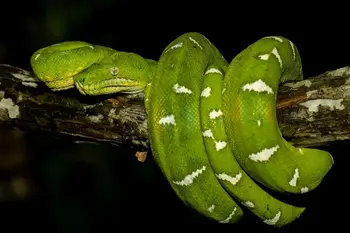
For herpers, Otorongo offers some of the most exciting opportunities to find and photograph reptiles and amphibians in their natural habitat. With 163 species confirmed in the area, guests can encounter a wide variety of snakes, lizards, frogs, turtles, and caimans. Nighttime herping tours are particularly fruitful, with guides skilled at spotting elusive species in the dark. Commonly seen herps include rainbow boas, anacondas, bushmasters, and poison dart frogs, including a rare morph discovered by lodge owner Anthony Giardenelli. Additional species include seven species of anoles, 48 snake species, 71 frog species, and three species of caimans.
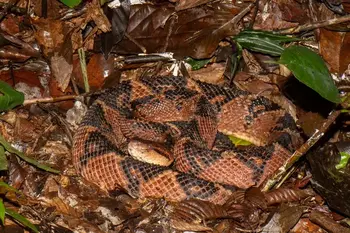
Herping at Otorongo often requires venturing to different locations by boat, as many species have specific microhabitats. From dense varzea forests to quiet oxbow lakes, these environments offer unique opportunities to observe herps in action. The guides’ expertise ensures not only safety but also increased chances of encountering rare species, making Otorongo a top destination for herpetological adventures.

The South American bushmaster (Lachesis muta) is commonly seen on the trails of the Otorongo property, and the guides are experts at finding them. During a one week stay at Otorongo, visitors have a very reasonable chance of spotting one or more bushmasters. Garden tree boas (Corallus hortulana) are one of the most commonly encountered snakes and are easily found at night by looking for their eye shine, and come in several different color and pattern morphs. The western rainbow boa (Epicrates cenchria) is another relatively common and highly sought after herp target. Two species of poison frog, Ranitomeya reticulata, and Ameerega bilinguis are commonly encountered when requested of your guide.
View A Partial Checklist of Reptiles Recorded at Otorongo → View A Partial Checklist of Amphibians Recorded at Otorongo →Birding Otorongo

Otorongo Ecolodge is a paradise for birders, boasting over 413 bird species recorded within a 10-mile radius. The lodge’s location at the confluence of distinct ecosystems creates staggering avian diversity, with many species endemic to the region. Guided birdwatching tours cater to all levels of expertise, with guides adept at identifying species by both sight and sound. Around the lodge itself, guests can spot iconic birds such as red-bellied macaws, blue-headed parrots, white-throated toucans, varzea schiffornis, and the wire-tailed manakin.
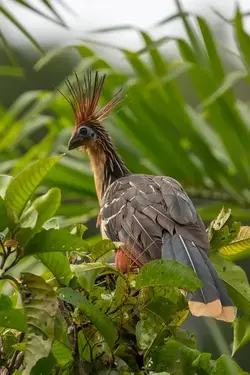
For serious birders, Otorongo offers multi-day birdwatching itineraries, traversing varzea forests, terra firme trails, and riverside habitats. “Lifers” frequently seen in the area include the ocellated antbird, spotted antpitta, helmeted pygmy-tyrant, and ochre-striped antpitta. Whether you’re aiming to photograph the spectacular sunrise flights of parrots or the secretive movements of forest-dwelling puffbirds, Otorongo’s guided tours ensure remarkable encounters.
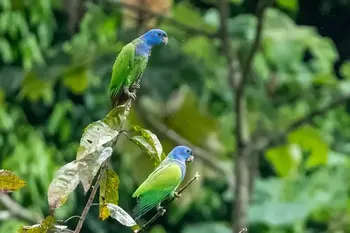
River loving birds such as egrets, herons, jacanas, black-collared hawks, osprey, swallows, caracara, and kingfishers are extremely common along the Amazon river and are very easily photographed on boat tours. More secretive birds such as macaws, toucans, and hoatzins, are also easily found via a boat and/or hiking tour...just let your guide know your target species, and he'll know the best places to find it!
View A Partial Checklist of Birds Recorded at Otorongo →Mammals of Otorongo
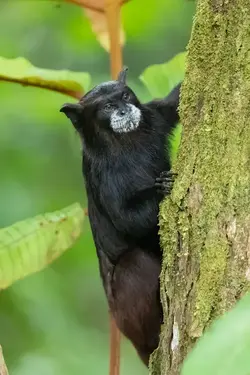
Mammal and general wildlife enthusiasts will not be disappointed at Otorongo, where opportunities to observe and photograph Amazonian mammals abound. The lodge’s gardens receive common visits from troops of black-mantled tamarins, and have several resident pygmy marmosets. Guests can also expect frequent encounters with three toed sloths, gray and pink river dolphins, squirrel monkeys, opposums and bats at night, and may request a day trip boating excursion to view giant river otters.
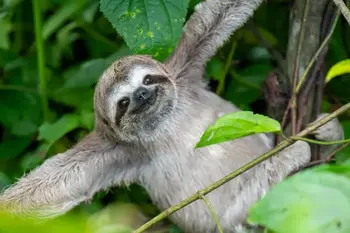
Otorongo’s expert guides use their keen tracking skills to help guests spot more elusive mammals, such as tapirs, and anteaters, which are often found deep within the forest during specialized trekking excursions. The lodge’s dedication to non-invasive wildlife observation ensures that all encounters are respectful of the animals’ natural behaviors, providing photographers with authentic and ethical opportunities to capture the Amazon’s most captivating mammals.
View A Partial Checklist of Mammals Recorded at Otorongo →Accommodations
-
 Price: $200 per night per person for a six night stay in the private cabin. Discounts exist for more people and for longer stays.
Price: $200 per night per person for a six night stay in the private cabin. Discounts exist for more people and for longer stays.
-
 Beds: Private cabins have one double and one single bed. Up to eight beds in the group cabin. Mosquito nets on beds.
Beds: Private cabins have one double and one single bed. Up to eight beds in the group cabin. Mosquito nets on beds. -
 Check In/Out: Flexible depending on your arrival/departure times.
Check In/Out: Flexible depending on your arrival/departure times. -
 Safe, isolated property
Safe, isolated property
-
 Outlets for Electronics in cabin and dining area. Universal adapter required for N. American & European plugs.
Outlets for Electronics in cabin and dining area. Universal adapter required for N. American & European plugs.
-
 Wifi. Cell/data service available in the dining area during breakfast, lunch, and dinner time.
Wifi. Cell/data service available in the dining area during breakfast, lunch, and dinner time.
 Meals: Full meal service. Delicious and hearty meals three times a day: breakfast, lunch, and dinner. Filtered water available in the dining area 24/7 to fill up water bottles.
Meals: Full meal service. Delicious and hearty meals three times a day: breakfast, lunch, and dinner. Filtered water available in the dining area 24/7 to fill up water bottles. Transportation services: Pickup from the airport or hotel in Iquitos, and boat transportation to the lodge included in price of stay.
Transportation services: Pickup from the airport or hotel in Iquitos, and boat transportation to the lodge included in price of stay. Bathroom: Shower, sink, toilet, only cold water.
Bathroom: Shower, sink, toilet, only cold water. Laundry: hand washing laundry service available, and drying on clothes line (drying times dependent on weather)
Laundry: hand washing laundry service available, and drying on clothes line (drying times dependent on weather) Languages Spoken: Mostly Spanish. An english speaking guide will be assigned to english speaking guests and will act as your liaison for your stay. French and German speaking guides can be requested.
Languages Spoken: Mostly Spanish. An english speaking guide will be assigned to english speaking guests and will act as your liaison for your stay. French and German speaking guides can be requested.
Otorongo in 360°
Click and drag your mouse on the images below to change the view perspective
Trails of Otorongo Ecolodge
The six-hectare property of Otorongo Ecolodge features a complex web of trails that traverse nearly all areas of its diverse rainforest terrain. These trails provide guests with access to lowland forest, which becomes flooded during the wet season, as well as upland rainforest that remains above the floodwaters. The trails wind through habitats shaped by small creeks that channel the daily downpours of the rainy season, creating essential microhabitats. These waterways are home to fascinating species such as dwarf caimans, aquatic coral snakes, small fish, and countless amphibians that rely on these areas for breeding and shelter.
While guests must be accompanied by a guide when hiking the trails, my personal experience revealed that the guides are remarkably accommodating. Far from keeping you on a short leash, they allowed ample freedom to explore within shouting distance, especially during nighttime hikes. This leniency was particularly valuable for wildlife photographers like me, as the guides were unrestrictive and highly accommodating when I wanted to photograph the snakes and other fascinating creatures we encountered. Their flexibility ensured that I could fully immerse myself in the experience and capture the perfect shots.
For those seeking to expand their exploration, additional trails can be accessed via a short boat ride up the Oran River tributary. These excursions offer opportunities to explore even more diverse habitats and increase the chances of encountering unique species, making the guided trail experience at Otorongo Ecolodge both enriching and rewarding for nature enthusiasts and photographers alike.
Otorongo's Tours
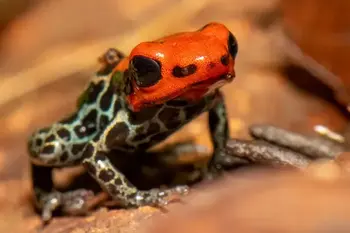
The tours at Otorongo Ecolodge are designed to be unique and flexible, precisely tailored to meet the goals, needs, and interests of each visitor. Upon booking, guests communicate their preferences to the Otorongo staff, who will craft an itinerary that reflects their desires. Whether you’re focused on birding, herping, wildlife observation, landscape photography, fishing, cultural experiences, fossil hunting, or a combination of activities, your tours will be curated to maximize your experience. The schedule remains adaptable throughout your stay, with the freedom to make requests or adjustments to activities at any time. Your guide will ensure that you are as busy with adventures or as relaxed as you wish.
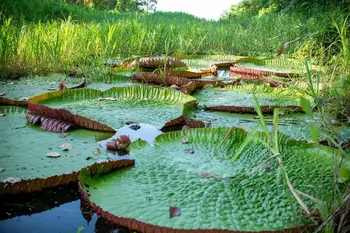
Typically, guests can look forward to three tours per day (morning, afternoon, and night) with options to request specialized daylong or overnight excursions. For example, a boat tour to search for elusive giant river otters may span both the morning and afternoon, including a packed lunch to keep you fueled for the journey. Nocturnal tours, which run from approximately 7 to 11 p.m., focus on spotting snakes, frogs, and other creatures of the night, offering incredible opportunities for herpers and night photographers.

The guides at Otorongo are exceptionally knowledgeable, with an intimate understanding of where to find your target species. They have near super human abilities in spotting well camouflaged and concealed rainforest wildlife. While herping, guides are lenient in allowing you to search independently within shouting distance, creating a balance between guidance and personal exploration. Additionally, the guides are highly accommodating to photographers, ensuring you have the time and conditions needed to capture the perfect shot of the reptiles, amphibians, and other creatures you encounter. Do not worry about the guides keeping you on too short of a leash while on guided night tours, or preventing you from getting your perfect shot.
Otorongo Videos
4 YouTube videos from Otorongo. Press play, then press ![]() (or Shift+N) on the video player to move to next video and
(or Shift+N) on the video player to move to next video and ![]() (or Shif+P) to move back to the previous video. Click the
(or Shif+P) to move back to the previous video. Click the ![]() icon in the top right corner of the player to view list of all videos.
icon in the top right corner of the player to view list of all videos.
360 Video. Press play and use your mouse to scroll video. Adjust the image quality in the settings section.
Travel Guide to Otorongo
*Caution: Use this section as a starting point for your transportation research, but be sure to confirm accuracy with a second reliable and up to date source. Additional travel information can be found in the Peru Travel Guide.
Getting to Otorongo Ecolodge begins with reaching Iquitos, a unique city renowned for being the largest in the world not connected to the outside world by road. The only ways to access Iquitos are by boat or plane, and for international travelers, flying is the most practical option. Fortunately, frequent domestic flights to Iquitos depart from Lima, Peru’s capital. Most international visitors will first arrive in Lima, where they can easily transfer to a domestic flight that reaches Iquitos in less than two hours.

Once in Iquitos, Otorongo will coordinate your pickup, whether from the airport or a local hotel if you choose to spend a night in the city before heading to the lodge. The specifics of your pickup will vary depending on your arrival time, your plans in Iquitos, and the size of your group, as Otorongo personalizes arrangements for each guest. To give you a sense of what to expect, here’s an account of my own experience.
Otorongo arranged for a licensed taxi to pick me up at the airport, with the fare already covered. Upon exiting the airport, I noticed several taxi drivers actively soliciting rides, but they quickly backed off when I informed them I already had a ride arranged. After a brief wait on a bench outside, a taxi driver approached, showing me my name and destination on his phone to confirm he was my driver. The driver took me to the Otorongo office, located at the Central Hotel in Iquitos, where I met my English-speaking guide, John.
From there, John and I continued our journey in the same taxi to the edge of town near the boat docks. When the paved road ended, John hailed a tuk-tuk to take us the remaining distance to the dock. Shortly after we arrived, the boat to Otorongo was ready to depart. The scenic ride down the Amazon River took about two hours, offering a fascinating glimpse of the rainforest along the way.

Otorongo’s well-organized logistics ensure that your journey to the lodge is smooth and stress-free, allowing you to focus on the incredible adventure that awaits. Note that upon arrival in Iquitos, I found myself without cell or internet service (even though I had service in Lima), and the airport did not have wifi. Be sure to check your email, phone, or whatsapp messages in Lima to check for any messages sent from Otorongo in case there's been a change of plans, and in case you lose service as I did.
❓Frequently Asked Questions (FAQs) About Otorongo
-
What wildlife can I see at Otorongo Ecolodge?
You can see a wide range of Amazon wildlife, including sloths, monkeys, pink and gray river dolphins, over 400 species of birds, and iconic reptiles like bushmasters and rainbow boas.
-
Is Otorongo Ecolodge good for herping in the Amazon?
Yes, Otorongo is one of the best ecolodges for herping in the Peruvian Amazon, with over 160 documented reptile and amphibian species, including Lachesis muta, Corallus batesii, and Ranitomeya reticulata.
-
How much does it cost to stay at Otorongo Ecolodge?
The all-inclusive rate is about $200 USD per day per person, covering accommodations, all meals, transportation to and from Iquitos, and three guided tours per day.
-
How do I get to Otorongo Ecolodge from Iquitos?
Otorongo provides pickup from Iquitos airport or hotel, followed by a boat ride down the Amazon River. The entire transfer is included in the price of your stay.
-
Can I explore the rainforest on my own at Otorongo?
No, unfortunately, self-guided exploration is not permitted. All forest access is with expert guides, which greatly increases your chances of wildlife encounters and ensures safety.
-
Is Otorongo Ecolodge good for birdwatching?
Yes, with over 413 bird species recorded nearby, Otorongo is a top birding destination in the Amazon. Guided birding tours are available every morning and afternoon. Feel free to tell your guide what species you're interested in seeing, and he'll likely know the best place to find that species.
-
Are there electricity and charging outlets at Otorongo Ecolodge?
Yes, private cabins have 220v solar-powered outlets, with electricity available 24 hours a day. You can keep cameras, flashlights, and phones fully charged. Be sure to bring a universal outlet adapter, as Peruvian outlets are not compatible with North American or European plugs.
-
What is the best time of year to visit Otorongo for wildlife?
Wildlife can be seen year-round, but the dry season (May to October) generally offers better trail access, while the wet season (December to April) increases sightings of reptiles and amphibians.
-
Are meals included at Otorongo Ecolodge?
Yes, three hearty meals per day are included. The meals are large, so you don't have to worry about not having enough to eat. The kitchen serves local and international dishes, and filtered drinking water is available 24/7.
-
What languages do the guides at Otorongo speak?
Most staff speak Spanish, but English-speaking guides are available. You can also request guides who speak French or German when booking your stay.
-
Where is the best place to see three toed sloths in the wild?
Otorongo ecolodge is arguably one of the best, if not the best place in the world to see three-toed sloths in the wild. Three toed sloths are common in this area, and the guides at Otorongo, have incredible skills of spotting them. I, personally, saw about ten sloths on just one, three-hour tour.
The two-toed sloth is also present at Otorongo. They are not quite as common as the three-toed sloth, but they are present at Otorongo and can sometimes be seen in the trees right outside your cabin.
-
Can you drink the tap water in Peru?
In general, no, the tap water is not potable (not drinkable) throughout Peru. However, Otorongo has clean, safe, drinking water in a water dispenser at the dining lodge, available 24/7. The tap water is safe for washing and showering, and it's okay if you get some in your mouth too, but for drinking and brusing your teeth, it's best to use the drinking water from the dispenser.
